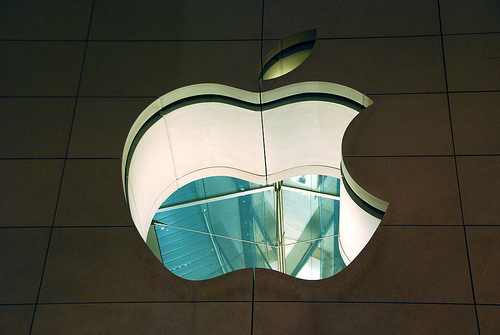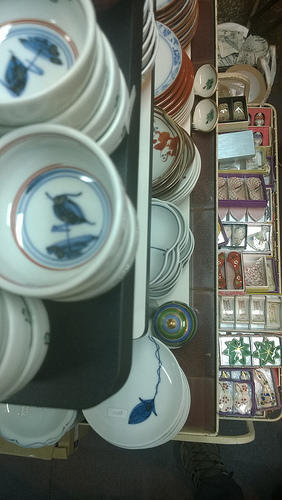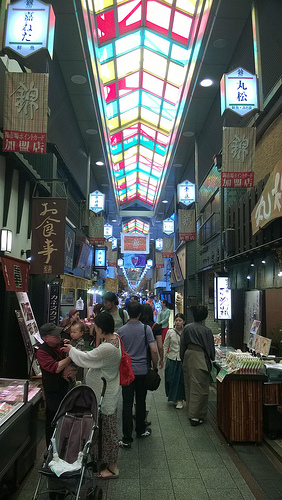Some cool discover chinese suppliers photos:
Open Apple

Image by afagen
Apple Shop, Michigan Avenue, Chicago, IL
– – – – –
Blogged by The Consumerist ("Consumerist Friday Flickr Finds" by Laura Northrup – July 20, 2012) at consumerist.com/2012/07/consumerist-friday-flickr-finds-1…
Blogged by The Consumerist ("Foxconn Finally Agrees To Enhance Situations For Apple Plant Workers By Cutting Hours" by Mary Beth Quirk – August 22, 2012) at consumerist.com/2012/08/foxconn-lastly-agrees-to-improve…
Blogged by The Consumerist ("Apparently We’re All Very Impressed With iPhone 5: Apple Stock Tops For The 1st Time Ever" by Mary Beth Quirk – September 19, 2012) at consumerist.com/2012/09/apparently-were-all-extremely-impresse…
Blogged by The Consumerist ("Wi-Fi Bug In iPhone five Surprises Verizon Customers With Massive Cellular Data Overages" by Mary Beth Quirk – October 1, 2012) at consumerist.com/2012/10/01/wi-fi-bug-in-iphone-5-causes-m…
Blogged by The Consumerist ("iPhone 5 Supplier Blames Design For Manufacturing Delays" by Chris Morran – November 7, 2012) at consumerist.com/2012/11/07/iphone-five-supplier-blames-desig…
Blogged by The Consumerist ("Judge Shuts Down Apple’s Request To Ban A Bunch Of Samsung Devices" by Mary Beth Quirk – December 18, 2012) at consumerist.com/2012/12/18/judge-shuts-down-apples-reques…
Blogged by Wall Street Insanity ("Carl Icahn Putting The Squeeze On Apple" by Joshua Rarrick – October 24, 2013) at wallstreetinsanity.com/carl-icahn-placing-the-squeeze-on-…
Blogged by Consumerist ("Apple Settles E-Book Antitrust Class Action Suit Terms Not Revealed" by Ashlee Kieler – June 17, 2014) at consumerist.com/2014/06/17/apple-settles-e-book-antitrust…
Blogged by Macgasm ("Apple Signs White Residence Pledge To Spend Modest Suppliers More rapidly" by Andrew Kunesh – July 11, 2014) at www.macgasm.net/2014/07/11/apple-white-property-pledge/
Blogged by Gigazine ("Appleの「iPhone 6」の初回生産台数は最大8000万台にものぼる見通し" – July 23, 2014) at gigazine.net/news/20140723-80-million-iphone-6/
Blogged by Consumerist ("Done Deal: Apple Buys Beats For B, Fires 200 People" by Ashlee Kieler – August 1, 2014) at consumerist.com/2014/08/01/completed-deal-apple-buys-beats-for…
Blogged by Consumerist ("People Began Lining Up Outdoors Of Tokyo Apple Shop On Sunday" by Laura Northrup – September 8, 2014) at consumerist.com/2014/09/08/people-started-lining-up-outsi…
Utilized by Entrepreneur ("Apple Opens its App Store to four.5 Billion Chinese Credit Cards" by PHILIP ELMER-DEWITT – November 17, 2014) at www.entrepreneur.com/article/239836
河原町周辺-錦市場

Image by Japanologia
I can not describe all sensations I felt when I visited Kyoto for the first time in my life. That I have a unique relationship with Japan, effectively, that is no news. But Kyoto has this particular energy, unbelievable and indescribable, that requires every single visitor back in time to a distant previous, and for several, a surreal past, as if we were displaced from the space-time continuum.
Kyoto was established in the 7th century in a land known as Yamashiro-no-kuni by the Emperor Kammu. Strictly following the Chinese geomancy from the Tang Dinasty (you can see it in the city layout, the grid pattern and the disposition of squares and blocks), the feng shui recommendations and the organic protection offered by its surrounding mountains, Kyoto, formerly recognized as Heiankyō, was the second capital of Japan, preceded by Heijōkyō, Nara.
Strongly influenced by the Chinese culture, Buddhism, literature, music, dance, arts and laws, Kyoto skilled the Heian Period, deemed by some as the apogee or epitome of nobility and court life. Identified to this day as one particular of the largest centers of the high Japanese art, Kyoto is a city that nonetheless exudes grace, regardless of the district in which you are situated.
If you want to get the best high quality craft items or even meet other facets of Japanese cuisine, you absolutely need to go to Kyoto, a mandatory place to each visitor who lands on Japanese territory. About Japanese cuisine, well, I came to speak about a unique spot whose traditional shops are practically endless sources of components not only for everyday life, but also for the greatest restaurants in town. Right now I’ll talk about Kyoto’s Kitchen.
A few months ago I wrote an post about the gastronomic adventures of Jiro Taniguchi and Masayuki Kusumi in the remarkable manga "Gourmet" (孤独のグルメ). As I wrote in that text, one of the greatest experiences you can have in Japan is to meet such a diverse and fantastically tasty cuisine, often finding surprises in unexpected locations that transcends that logic that “in Japan they only consume sushi, sashimi and Temaki”.
Once more, for common Japanese dishes, I’m speaking about what you consume in the every day life in the Land of the Increasing Sun. No, not that stupidity to consider that Japan was taken by temakis. Several of my buddies are nonetheless surprised to discover that there are several more things than sushi and sashimi. One particular of the ideal areas to understand, to really feel, to smell and to taste this dimension of the Japanese day-to-day life is going to the Nishiki Market or Nishiki Ichiba (錦市場), a magic place consisted by long and arrow blocks near the Teramachi Arcade (寺町通) and quite close to Pontochō (先斗町).
Its first traditional shops dates from the 14th century, becoming 1 of the most essential fish suppliers of town. Nishiki Ichiba progressively turned into a massive market place, whose variety of merchandise consists of not only food and components for cooking, but also crafts, porcelain and other items for every day life. Alongside the bric-a-brac shops, greengrocers, rice shops, fishmongers, pastry shops and ice cream parlors there are several restaurants serving standard meals. At the finish, the tour in Nishiki Ichiba can last for hours, filled with great meals that is totally unknown to foreigners.
With its higher ceilings and green, red and yellow glass tiles, Nishiki Ichiba is crowded with all kinds of individuals, all of them immersed in a globe of infinite smells and tastes.
The initial time I was in Nishiki Ichiba I was accompanied by the presence of fantastic friends, 1 of them a resident of Kyoto in these times. Understanding each alley and city streets, she took us to one particular of the most impressive locations of Kyoto, a industry that fascinated me immediately. Come on, Japan is definitely not a location invaded by sushi-monsters, sashimi-zillas or temaki-robots.
It took years for me to return, this time paying focus to other information that go unnoticed that time. Initially becoming a profusion of indicators for all the senses, now the Nishiki Ichiba was a really familiar spot, whose tenants and Japanese purchasers were all quite type, who did not hesitate to strike up a conversation with a stranger fascinated by Japanese culture. Regardless of getting a tourist town, they showed enthusiasm in speaking, in Japanese, to a japanologist researcher who felt back at property. For a brief moment, every thing seemed frozen in time. Or at least it seemed that time passed more gradually within that marketplace. Be concerned much less about sushi, temples, shrines and all that hightech mumbo jumbo and let be hooked by the stomach. Give it a attempt. I assure you it will be delicious.
by Victor Hugo Kebbe
河原町周辺-錦市場

Image by Japanologia
I can’t describe all sensations I felt when I visited Kyoto for the 1st time in my life. That I have a particular relationship with Japan, effectively, that’s no news. But Kyoto has this unique power, unbelievable and indescribable, that requires every single visitor back in time to a distant previous, and for several, a surreal previous, as if we were displaced from the space-time continuum.
Kyoto was established in the 7th century in a land referred to as Yamashiro-no-kuni by the Emperor Kammu. Strictly following the Chinese geomancy from the Tang Dinasty (you can see it in the city layout, the grid pattern and the disposition of squares and blocks), the feng shui suggestions and the organic protection presented by its surrounding mountains, Kyoto, formerly identified as Heiankyō, was the second capital of Japan, preceded by Heijōkyō, Nara.
Strongly influenced by the Chinese culture, Buddhism, literature, music, dance, arts and laws, Kyoto skilled the Heian Period, considered by some as the apogee or epitome of nobility and court life. Identified to this day as 1 of the biggest centers of the high Japanese art, Kyoto is a city that nevertheless exudes grace, regardless of the district in which you are situated.
If you want to get the greatest top quality craft things or even meet other facets of Japanese cuisine, you undoubtedly must go to Kyoto, a mandatory location to every single visitor who lands on Japanese territory. About Japanese cuisine, properly, I came to speak about a particular location whose standard shops are practically endless sources of ingredients not only for each day life, but also for the greatest restaurants in town. Today I’ll talk about Kyoto’s Kitchen.
A couple of months ago I wrote an report about the gastronomic adventures of Jiro Taniguchi and Masayuki Kusumi in the wonderful manga "Gourmet" (孤独のグルメ). As I wrote in that text, a single of the very best experiences you can have in Japan is to meet such a diverse and fantastically tasty cuisine, often finding surprises in unexpected areas that transcends that logic that “in Japan they only consume sushi, sashimi and Temaki”.
Again, for typical Japanese dishes, I’m speaking about what you eat in the each day life in the Land of the Rising Sun. No, not that stupidity to believe that Japan was taken by temakis. Many of my buddies are nevertheless surprised to find out that there are many far more factors than sushi and sashimi. One particular of the very best places to comprehend, to really feel, to smell and to taste this dimension of the Japanese daily life is going to the Nishiki Market place or Nishiki Ichiba (錦市場), a magic place consisted by lengthy and arrow blocks close to the Teramachi Arcade (寺町通) and fairly close to Pontochō (先斗町).
Its very first classic shops dates from the 14th century, becoming one particular of the most critical fish suppliers of town. Nishiki Ichiba progressively turned into a massive market, whose range of goods involves not only food and ingredients for cooking, but also crafts, porcelain and other merchandise for every day life. Alongside the bric-a-brac shops, greengrocers, rice shops, fishmongers, pastry shops and ice cream parlors there are numerous restaurants serving typical food. At the end, the tour in Nishiki Ichiba can final for hours, filled with excellent food that is completely unknown to foreigners.
With its high ceilings and green, red and yellow glass tiles, Nishiki Ichiba is crowded with all types of men and women, all of them immersed in a planet of infinite smells and tastes.
The very first time I was in Nishiki Ichiba I was accompanied by the presence of wonderful pals, a single of them a resident of Kyoto in those times. Being aware of every alley and city streets, she took us to 1 of the most impressive places of Kyoto, a market place that fascinated me quickly. Come on, Japan is undoubtedly not a spot invaded by sushi-monsters, sashimi-zillas or temaki-robots.
It took years for me to return, this time paying consideration to other specifics that go unnoticed that time. Initially being a profusion of signs for all the senses, now the Nishiki Ichiba was a very familiar place, whose tenants and Japanese buyers have been all quite type, who did not hesitate to strike up a conversation with a stranger fascinated by Japanese culture. In spite of being a tourist town, they showed enthusiasm in speaking, in Japanese, to a japanologist researcher who felt back at property. For a brief moment, every little thing seemed frozen in time. Or at least it seemed that time passed far more gradually inside that market. Worry less about sushi, temples, shrines and all that hightech mumbo jumbo and let be hooked by the stomach. Give it a try. I assure you it will be delicious.
by Victor Hugo Kebbe